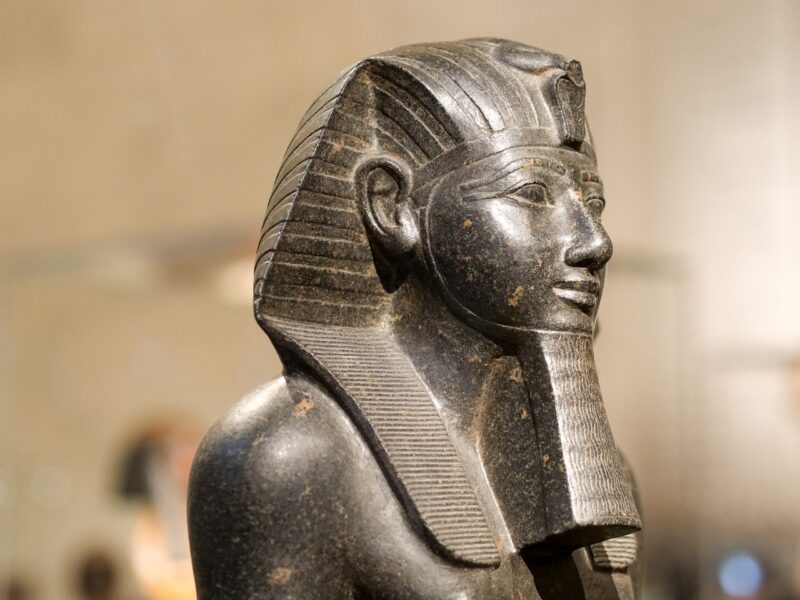How Ancient Egyptians Invented the First Known Pregnancy Test
November 15, 2024

The realm of pregnancy testing has come a long way since its inception in ancient civilizations. Surprisingly, one of the first known methods of pregnancy detection dates back to Ancient Egypt, where women employed an intriguing yet effective technique that showcased the innovative spirit of their time. By examining how the Egyptians approached this intimate subject, we gain insight into their culture, scientific understanding, and the evolution of medical practices over the centuries.
1. A Glimpse into Ancient Egyptian Life
To understand the significance of pregnancy testing and its evolution, we must first look at the context of Ancient Egyptian society. Situated along the Nile River, Egyptian civilization flourished for thousands of years and was known for its incredible advancements in various fields, including medicine, agriculture, and architecture.
Women in Ancient Egypt played vital roles in both family and societal structures. Childbearing was highly valued, making the ability to conceive an important aspect of women’s lives. Therefore, knowing the earliest signs of pregnancy was crucial for women and families alike.
2. The Ancient Egyptian Pregnancy Test: Sources and Methods
Historical records and papyrus documents reveal that the ancient Egyptians devised a method to determine whether a woman was pregnant. The procedure is notably believed to utilize the urine of the woman in question. This practice, often referred to as the “urine test,” had some fascinating elements:
- Urine and Barley: According to historians, the Egyptians would collect urine samples from women and then soak barley seeds in this fluid. The belief was that if the seeds sprouted, it was an indication of pregnancy. Interestingly, barley seeds were thought to be influenced by hormones present in a pregnant woman’s urine, leading to the growth of the seeds within a few days.
- Lentils as an Indicator: Some records suggest that lentils were also used in a similar test. It was believed that the seeds would sprout when exposed to the pregnant woman’s urine. This multifaceted approach denoted the Egyptians’ understanding of plant biology and the correlation that might exist between hormonal changes and the growing life of seeds.
- Interpretation of Results: After a specified period, the test results were interpreted. If the seeds sprouted, it was assumed that pregnancy had occurred; if not, the woman was likely not pregnant. This method of interpretation underscores a deep-seated connection between nature, fertility, and human life in Egyptian culture.
3. Cultural and Historical Significance
The pregnancy testing method used by the Egyptians highlights their profound understanding of human physiology and the natural world. It reflects the culture’s value placed on motherhood and family, which was intertwined with their socio-political structures. Pregnancy was not merely a biological event but also a significant catalyst for lineages and succession in a civilization that revered family and heritage.
Moreover, the ancient Egyptian approach to pregnancy testing has laid the groundwork for future methodologies in various cultures. The eventual evolution leading to modern pregnancy tests reveals how ancient practices have informed contemporary science.
4. Comparison with Modern Pregnancy Tests
Fast forward to the 21st century, where the landscape of pregnancy testing has undergone a remarkable transformation. With advancements in science and technology, modern pregnancy tests primarily employ immunology and biochemistry to detect the presence of human chorionic gonadotropin (hCG) – a hormone produced during pregnancy. This innovation allows for more accurate, rapid, and non-invasive results.
Despite the ingenuity of the ancient Egyptians, which involved using plants and biological indicators, today’s tests can deliver results in minutes with precision and reliability. Even so, the essence of the purpose remains unchanged: providing knowledge about the possibility of new life.
5. Conclusion: The Legacy of Ancient Practices
The Ancient Egyptians’ pioneering contributions to the understanding of pregnancy and the means to test for it showcase the rich tapestry of human history interwoven with innovation and a quest for knowledge. Examining these practices allows us to appreciate not only how far we have come in medical science but also the timeless nature of human curiosity concerning life and creation.
These ancient methods laid foundational stones for our understanding of fertility and pregnancy, which continue to advance in increasingly sophisticated ways. They remind us that even in an age of rapid technological innovation, the roots of our practices often can be traced back to our earliest civilizations.
Whether through the lens of Ancient Egypt’s symbolic relationship with nature, or the modern clinic’s laboratory tests, the journey of pregnancy testing is a remarkable story of evolution. Understanding these connections deepens our respect for the ancient innovators and enriches our perspective on life today.








